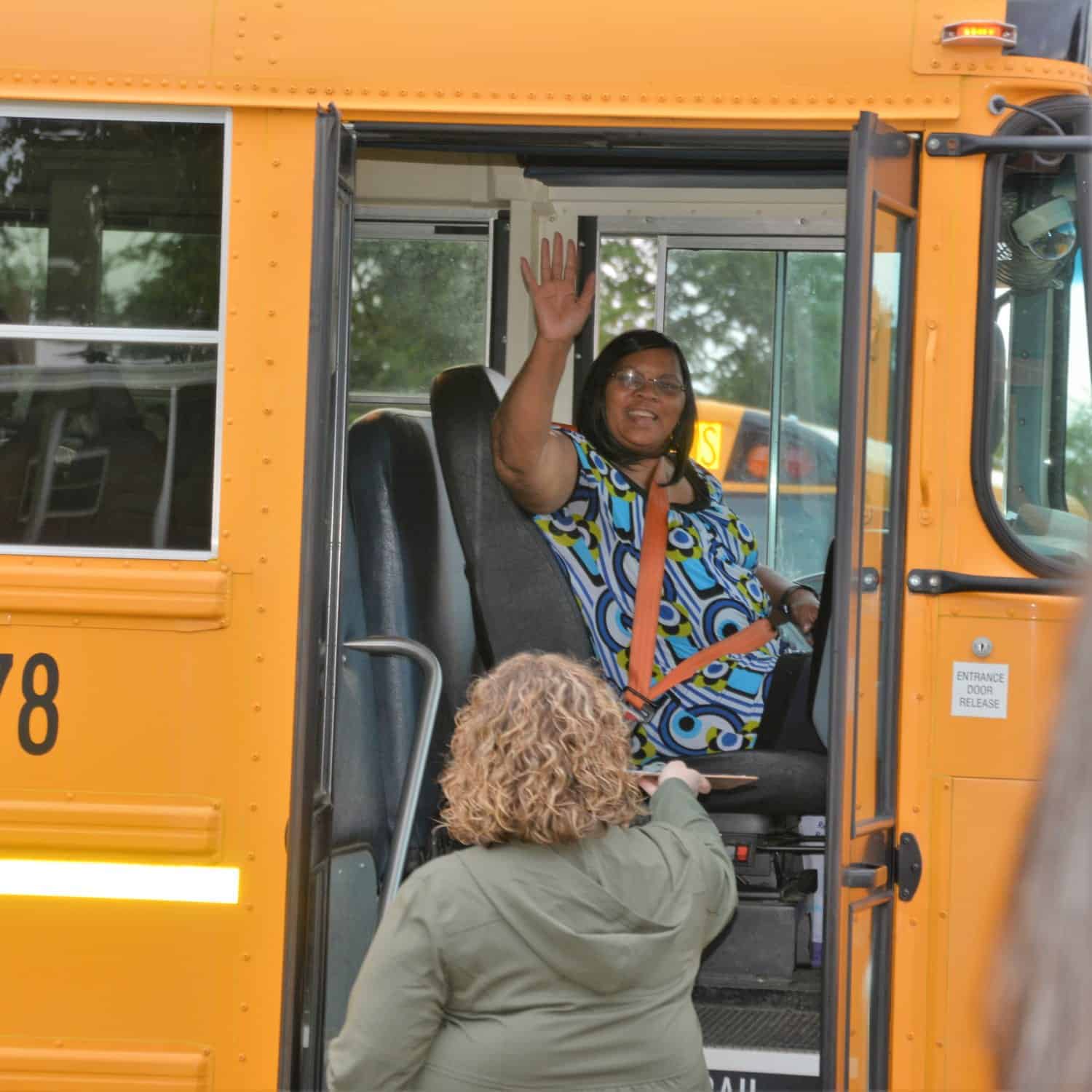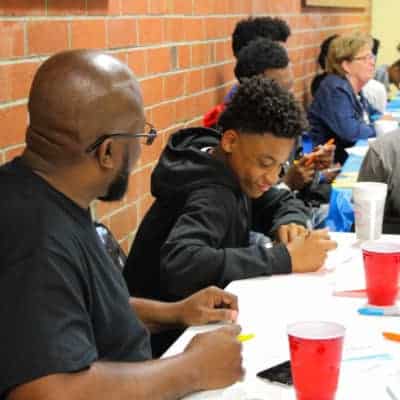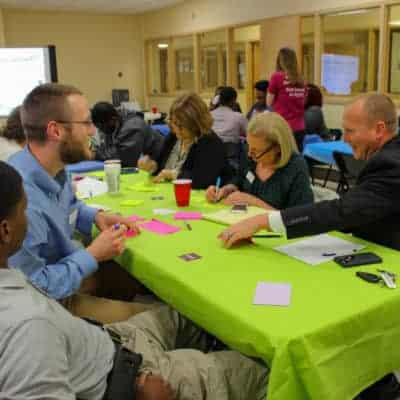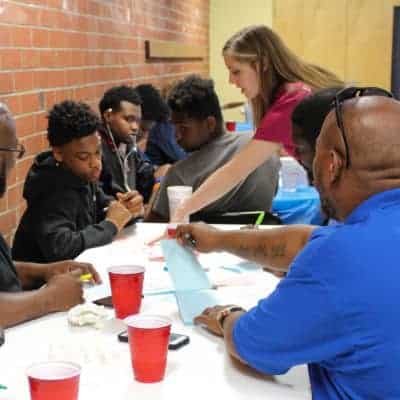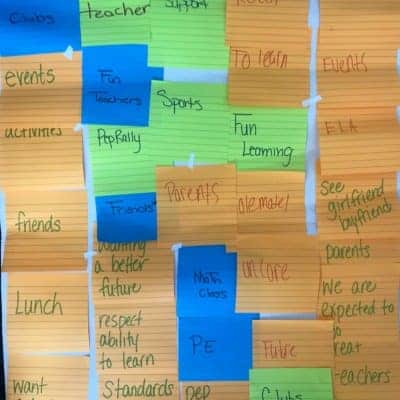“School can be boring. It’s a lot of work. People don’t like to use their brains, and some people get picked on.” – Miracle, a student at Phillips Middle School in Edgecombe County
If you had to say why so many students miss school in the United States, would you say this? Probably not.
Adults are quick to give reasons for why students miss school — families don’t have transportation or parents don’t make their kids go to school — but what is often left out of the conversation is the fact that many kids don’t want to go to school because they don’t like it.
Over the past five months, EducationNC has been researching the topic of chronic absenteeism in Edgecombe County through the use of Reach NC Voices surveys, focus groups with community members, interviews with school leaders and educators, and going door-to-door in communities to talk about this issue. We’ve learned a lot along the way, especially about our own assumptions.
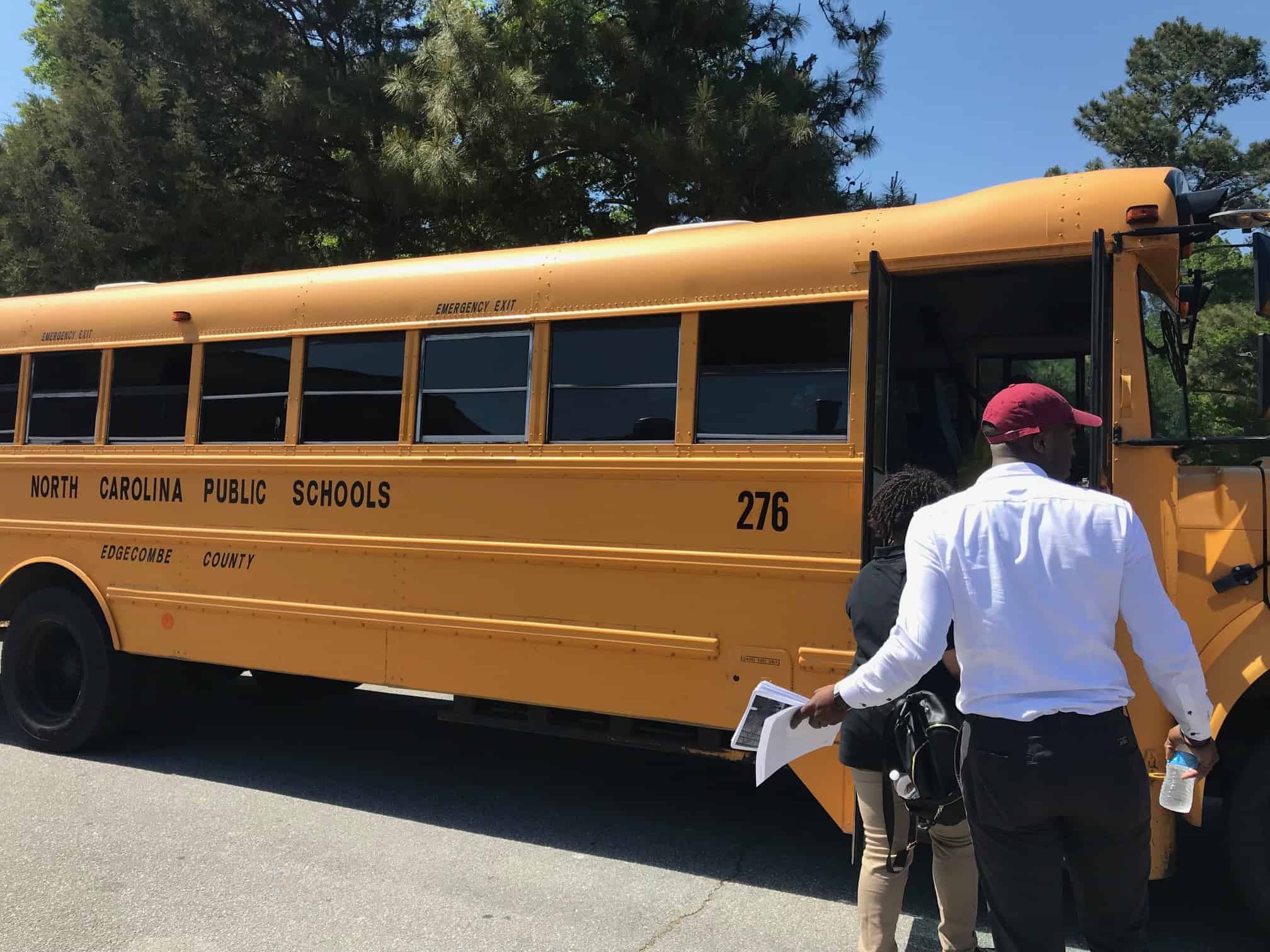
The chronic absence rate in Edgecombe County for the 2015-2016 school year was about 20 percent, meaning one in every five students in Edgecombe County missed 15 days of school or more. The rate for white students is 28 percent compared to 20 percent for black students, 15 percent for Hispanic students, and 33 percent for American Indian students. For individual schools, the chronic absence rate ranges from a low of 1.2 percent at Edgecombe Early College High to a high of 33.3 percent at Southwest Edgecombe High.
Chronic absences matter. Research has found that chronically absent students are less likely to read proficiently by third grade and less likely to graduate from high school. A study of sixth-grade students in Baltimore City Public Schools found chronic absenteeism to be the strongest predictor of not graduating from high school.
Just knowing the chronic absence rate of a school or district is not enough, however. Understanding why students are chronically absent is crucial to designing solutions that reduce chronic absences. Ethan Hutt, a nationally renowned researcher and co-editor of an upcoming book on chronic absenteeism, believes few school districts truly know why their students are missing school: “What I would encourage districts to do — it sounds so simple to say, but a lot of districts don’t actually know the answer to this — is find out why students are missing school and really investigate.”
EducationNC decided to investigate.

We started by surveying Edgecombe County residents. We published the survey online and on social media, and we asked residents to fill the survey out at various events around the county. In total, 86 people took the survey over the course of three months. Of those respondents, 60 percent were white, 23 percent African-American, and 19 percent Hispanic or Latino. Sixty-two percent of respondents were women with 38 percent men, and 76 percent had a bachelor’s degree or higher compared with 18 percent reporting high school or GED as the highest level of formal education.
We asked respondents how they were involved in schools. About one-third responded that they are a parent, one-third responded that they just care about schools, and 20 percent responded that they are teachers or school administrators.
Seven of every 10 respondents had heard the terms “chronic absenteeism” or “chronic absence,” whereas the other three in 10 either had not heard the terms or were unsure. Three-quarters of respondents stated chronic absenteeism is an issue in their community, with only 7 percent responding it is not an issue.
We asked, “What are some reasons why children miss school in your community?” Most respondents stated multiple reasons, and the most commonly cited reasons were sickness and health issues (22 percent of responses), lack of transportation if students miss the bus (21 percent), lack of parental support for attendance (17 percent), family challenges such as a family emergency or having to take care of younger siblings (10 percent), and students not enjoying school (9 percent). These responses were largely in line with the statewide response to this question. Responses included the following:
“Sickness. Kids don’t see doctors regularly.”
“No motivation to go or support system to encourage attendance.”
“Before I had my own transportation, if my children missed the school bus then that was a missed day of school.”
“Illness, no back up transportation if bus is missed, don’t enjoy school, bullying, not thinking a day off once in a while matters. MOST PARENTS DO CARE. We are all doing the best we can do.”
We also asked, “What are some strengths of your community that help children get to and/or stay in school?” Again, respondents answered with a variety of different strengths, but the most commonly referenced strength was the school bus system, which accounted for 23 percent of responses. The next most commonly stated strength was community involvement, followed by school events, teachers, sports, and mentors. Some notable responses included:
“Mentors. I would love to see local companies and organizations build mentoring into their HR program. Allow and encourage employees to mentor at schools 1 hour a week. What a difference it would make.”
“Public transportation and strong legacy of sports.”
“Strong teachers and administration with progressive ideas.”
“Transportation, community leaders and teachers who do home visits.”

In April and May, we invited teachers, administrators, faith leaders, law enforcement, nonprofit leaders, students, and parents to join us for a series of dinners focused on chronic absenteeism. At the first dinner, we reviewed the definition of chronic absenteeism and asked participants why they thought students missed school in their community.
Working in groups, participants came up with several reasons why students miss school, including: bullying, students not being interested in school, illness and health issues, being suspended, no transportation after missing the bus, not having clean clothes, watching a younger sibling, no connection to teachers or school staff, vacation, and many more. One student told us that at her high school, students who were late to class — no matter if it was three minutes or 15 minutes — were locked out and missed the entire class.
For the second dinner, we focused on the strengths of the community when it comes to school attendance. Participants worked together to think about why students come to school and how their community could collaborate to ensure students stay in school.
We heard various different strengths, but unlike in the survey, the majority of responses focused on how to increase student motivation and enjoyment of school. Students at the dinner talked about the impact of finding teachers who cared about them and teachers who made their lessons interesting and relevant. They also emphasized aspects of school culture, such as sports, pep rallies, prom, and other events, that made them excited to come to school.

On a hot July day, four groups of EdNC staff and Edgecombe County educators set off to different neighborhoods in the county to knock on doors and talk to parents, grandparents, aunts, uncles, and students. We asked them why they think students miss school and what the community can do to make sure students get to and stay in school.
We heard a wide variety of answers. Residents told us there is a need for additional sports, there is strong community involvement in schools because schools actually care and visit them, and that bullying is a cause of absences and needs to be addressed. As we walked around, people told us stories of their own school experiences. One resident said,
“I used to be that kid. Dad passed away young (six years old) [and] I had to work. Lord knows I was behind the ball. I still am. I can hardly spell. Some kids are missing it to be hard kids, and some kids are missing it to survive.”
Another resident told us he had dropped out his junior year to join the military. He said he had poor grades in school because he had to help out on his mother’s farm.
Our CEO, Mebane Rash, joined Phillips Middle School principal Jenny O’Meara and assistant principal Jessica Parker at a neighborhood called Mobile City. Miracle, a student at Phillips Middle, walked them through the neighborhood and told them why she thinks kids don’t go to school.
We learned from this experience that talking to students and families in their own homes is crucial in moving past our own assumptions and getting a better understanding of why students miss school. Principal O’Meara said the experience of going door-to-door to talk with students has helped her immensely:
“I took Mebane to a specific neighborhood because kids have to walk nearly a mile to get to the bus and a lot of kids are absent. My hypothesis was they miss school because they don’t have a ride, and they miss the bus because they have to walk so far. We only talked with students that day. As we were talking to the kids, it was so insightful because it came out that that had nothing to do with it, and I was shocked by that.
Their answers were more around bullying and feeling uncomfortable around peers. That was really enlightening and incredibly helpful because that led me to think differently. Instead I’m thinking about how do I create a space where every kid feels welcome and loved.”

This school year, O’Meara is focused on ensuring all students feel welcome and loved. She has instituted a 20-minute home room so students spend the first 20 minutes of the day with an adult who cares about them. She has worked with her teachers to utilize the school social worker to a greater extent.
“Teachers didn’t even realize we had a social worker because she was split between multiple schools,” O’Meara said. “Putting the right structures in place has mattered this year. I’m seeing more communication which matters for kids.”
She also credits her teachers for working to create that space where every kid feels loved and welcome: “I think I have the right people here. They’re here for children. That makes a huge difference just having teachers [kids] like.”
Dan Riley, a leadership coach at Teach for America Eastern North Carolina who works with teachers in Edgecombe County, said he believes schools need to do more to make kids feel welcome and want to come to school. He has been working with both O’Meara’s and Cannon’s students who are part of the microschool this year and said, “We just heard resoundingly in empathy work with kids that they don’t really feel cared for or loved.”
Riley said making school a place where every kid feels loved and secure is a big focus of the microschool. EducationNC will be working with students to document the microschool throughout the year and share lessons learned, including how they are working to make every student feel loved. Stay tuned to see the results!
